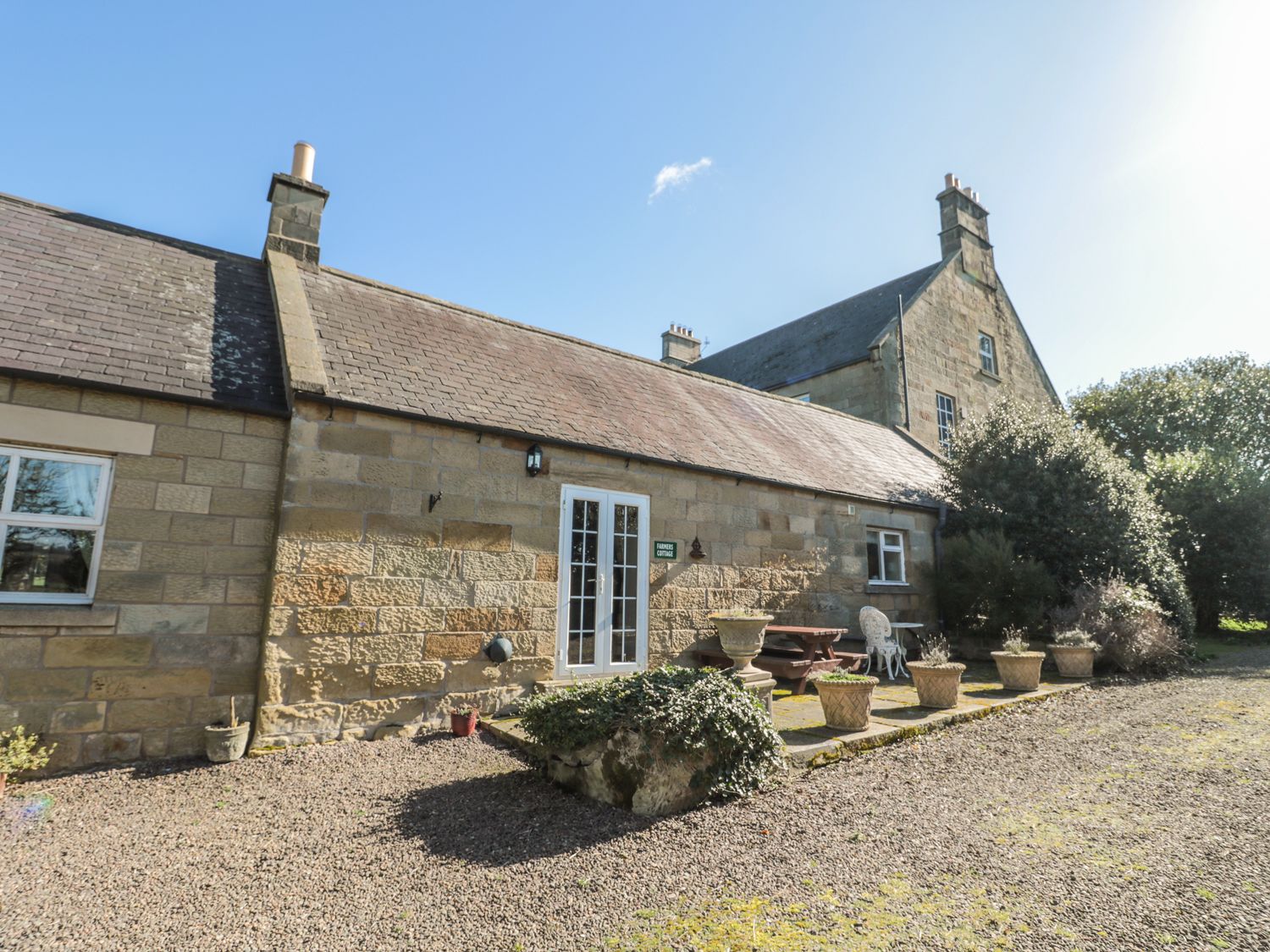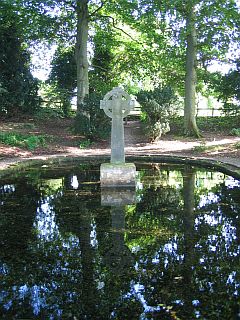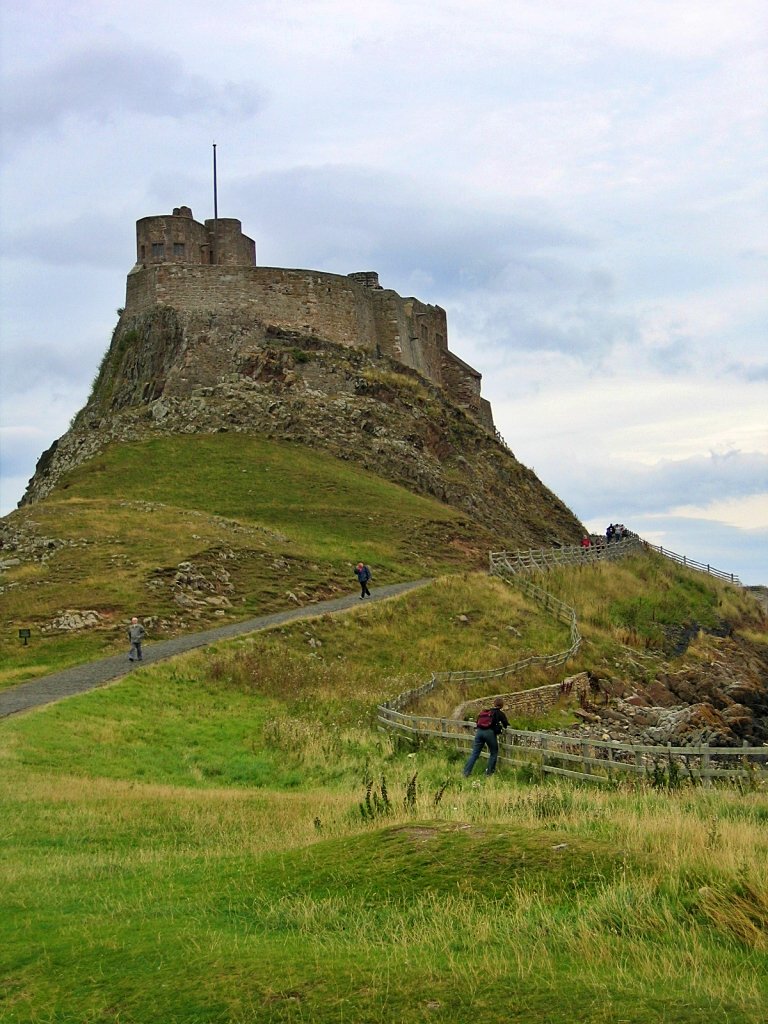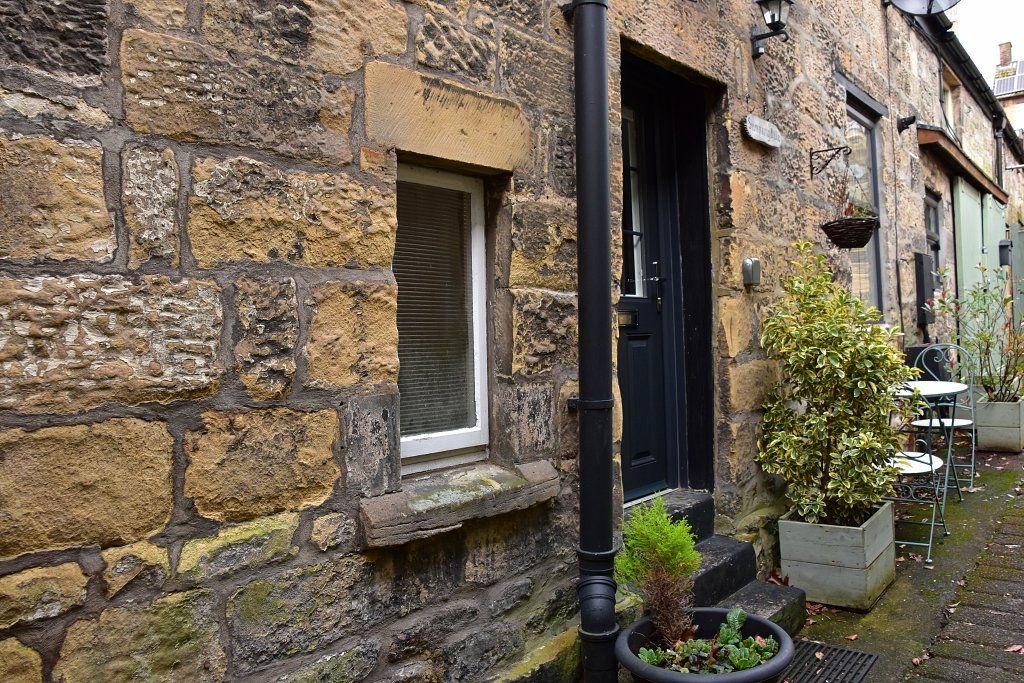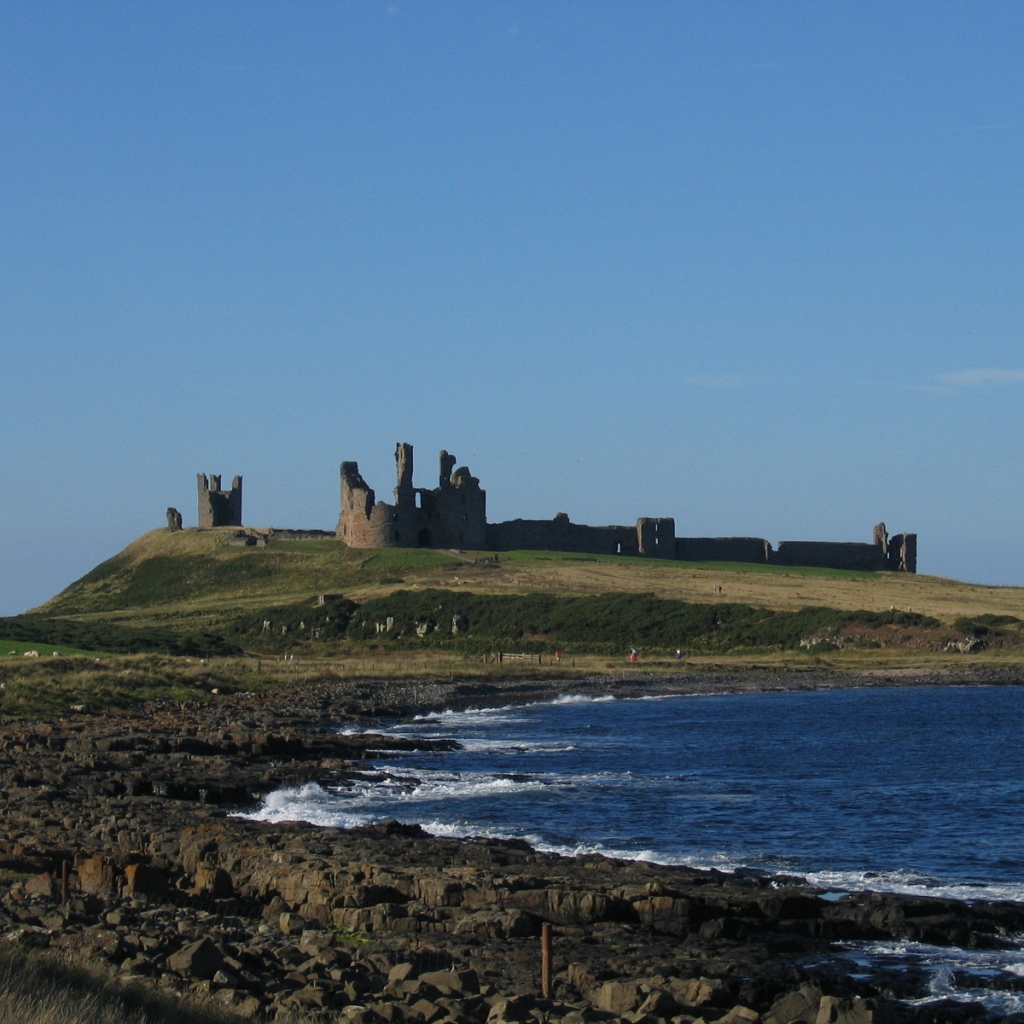Cragside
Was this the World's First Smart House?
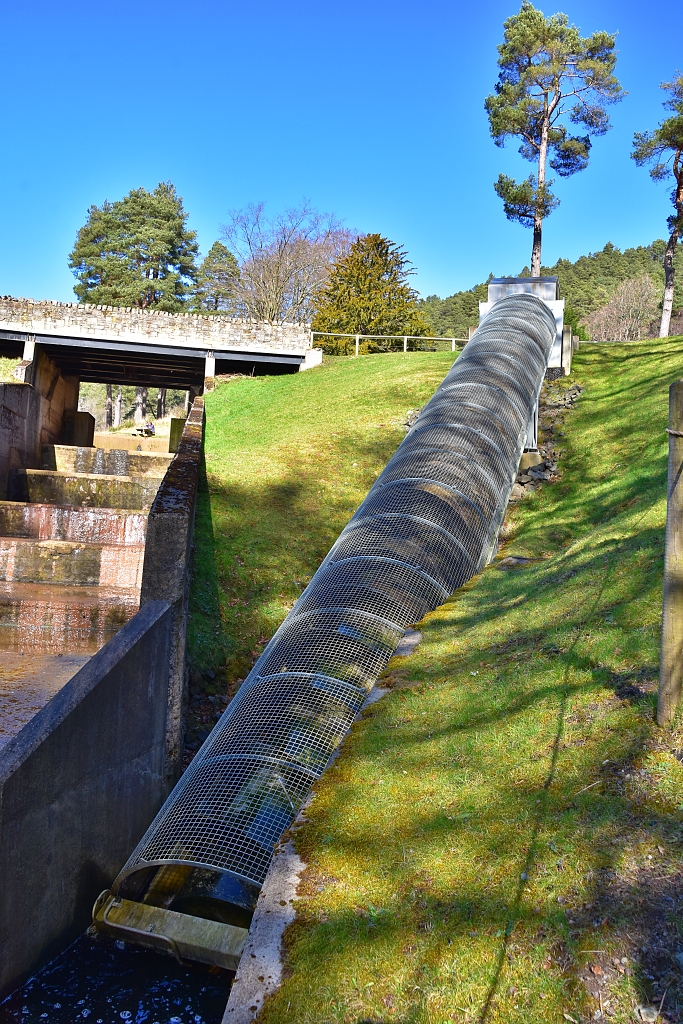 The 2014 Archimedes Screw at Cragside
The 2014 Archimedes Screw at Cragside© essentially-england.com
Cragside, a stately home in Northumberland, was the world's first house to have electrical lighting powered by water.
Hydroelectricity was generated using an Archimedes screw and the setup was the brainchild of Lord Armstrong - inventor, engineer, maybe magician - who designed numerous innovative features to make life more efficient throughout the amazing home and estate he built with his wife, Lady Armstrong.
Their house and estate became famous across the globe and the world’s best engineers and scientists, as well as the rich and famous, clamoured for an invitation to visit.
The name Lord and Lady Armstrong gave to their substantial Victorian home doesn’t seem so strange when you visit.
The house sits atop a rocky elevation and is literally built into the crags!
It's also surrounded by one thousand acres of stunning landscape, which you can explore using the six-mile road circling the estate. It has plenty of parking spaces for you to step out and admire the sights.
And for the energetic, there are close to forty miles of footpath with several waymarked walks.
All visitors to Cragside will find something of interest. There is a tick for those who like to browse around posh Victorian houses, another for the engineering/geeky-minded who can play detective and find all the innovations, and finally a big tick for the outdoorsy people who love marching through stunning gardens and scenery. So, pack a tasty picnic and get ready for a great day out at Cragside!
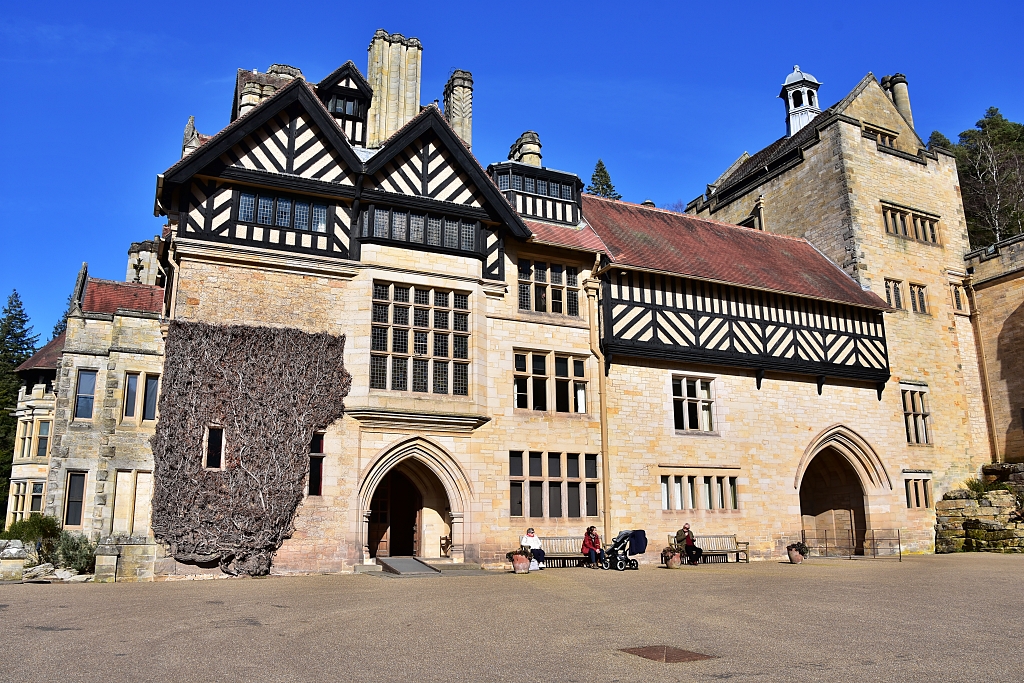 Cragside House © essentially-england.com
Cragside House © essentially-england.com
Lord and Lady Armstrong
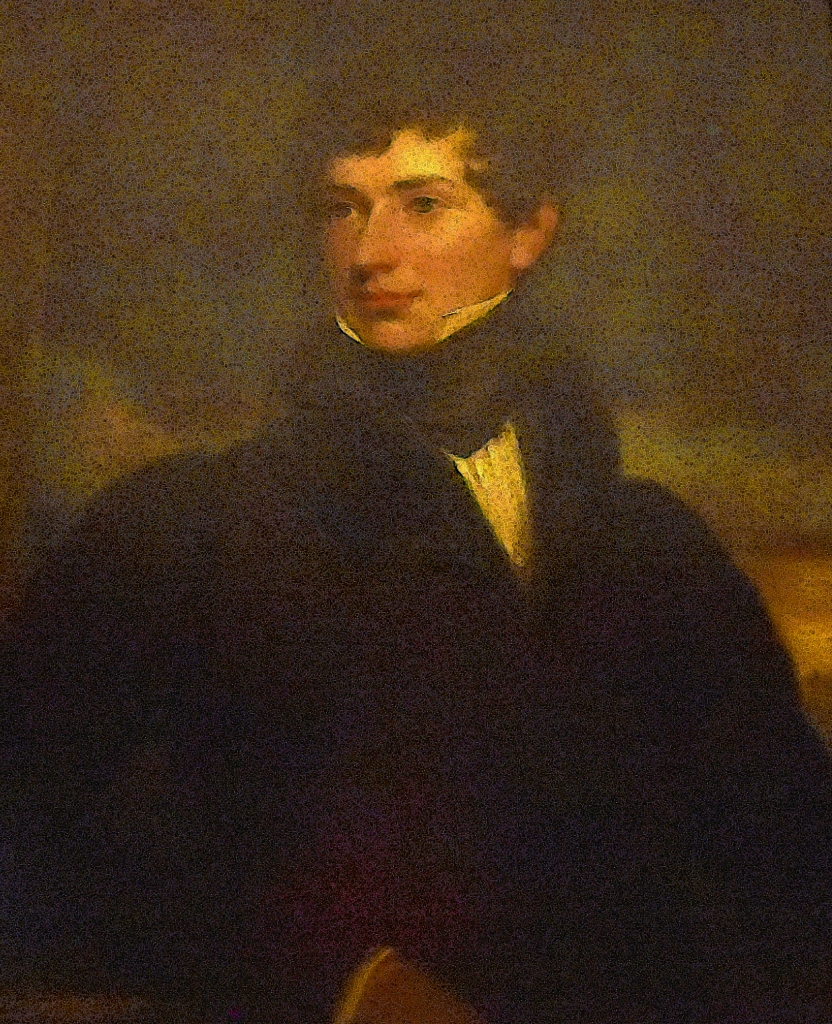 A Young William George Armstrong © essentially-england.com
A Young William George Armstrong © essentially-england.comI found it surprisingly difficult to write about Lord and Lady Armstrong. They were two people “who got things done”, and the legacy they left at Cragside - the house, the estate, the myriad of innovations and collections - epitomises that.
The Armstrongs first practised their home improvement and landscaping skills at Jesmond Dene - a place we've yet to visit. But one story told of the couple stuck with us:
“Margaret was unhappy about the pack horses carrying their heavy loads up the step sides of Jesmond Gorge, so William went and built a wrought-iron bridge across the gorge to ease the horses’ burden.”
How nice is that!
So, not only do we have an inventor and industrialist who is way ahead of his times, but a couple who put their hearts into creating their dream home.
The 1000-acre estate now boasts over seven million trees and shrubs. While planted with an eye for the visual effect, the Armstrongs also made sure the plants would survive the challenging Northumbrian weather.
All this, and they still had time to collect art, antiques, and specimen from the natural world - some of which are on show in the gallery and drawing room
Here is a short “highlights” list of what the Armstrongs achieved
|
1807 |
Margaret Armstrong (nee Ramshaw) born. |
|
1810 |
William George Armstrong born. |
|
1826 |
Up to age 16 William attended the Royal Grammar School in Newcastle. A further two years of education were completed at Bishop Auckland Grammar School, where he often visited the William Ramshaw engineering works, where he met Margaret. |
|
1828 |
After his schooling, William went to London to study law, following his father's wishes. He was supported through his law studies by his father’s solicitor friend, Armorer Donkin. |
|
1833 |
William returned to Newcastle and worked as a solicitor. He used his spare time to experiment and study engineering. |
|
1835 |
William became a partner in Donkin’s business. William and Margaret married. Her parents gifted them sixteen acres of land at Jesmond Dene, where the couple started to build a new house and model the landscape. William gained an interest in the power of water while watching a watermill. He believed the watermill was not making the best use of the power available and developed, first, a rotary engine, and secondly a piston engine that could be used to power cranes. |
|
1842 |
William developed the Armstrong Hydroelectric Machine, which generated static electricity from friction of a liquid. |
|
1845 |
William became involved in a project to pipe water to Newcastle and discussed the use of the water pressure to build his hydraulic cranes at Newcastle docks. |
|
1846 |
For his contributions to electrical and hydraulic engineering, the scientific community elected William as a Fellow of the Royal Society. |
|
1847 |
Now 37, William resigned from legal practice and created W. G. Armstrong & Company. They bought 5 acres of land alongside the River Tyne at Elswick, Newcastle to build their factory. He mostly produced hydraulic cranes and systems for use around the docks and railways. William invented the hydraulic accumulator, which could be used when water pressure was low. By 1853 the Elswick plant was manufacturing around 100 cranes per year. |
|
1854 |
During the Crimean War, reports of the British Army struggling to move their heavy guns pricked the interest of William Armstrong. |
|
1855 |
The Elswick plant had moved into bridge building and completed their first bridge at Inverness in Scotland. They also demonstrated their first gun to the British government. The trials went well and the government started to buy Armstrong armaments. |
|
1859 |
William gave his gun patent to the British government and was created a Knight Bachelor by Queen Victoria. He started working as engineer for the Rifle Ordnance at Woolwich Arsenal in London, where they built the guns designed at Elswick. In Newcastle, he created Elswick Ordnance Company, which continued to design guns but had no financial tie to his own business. |
|
1862 |
William left his post at the Rifle Ordnance after the government decided not to use the latest gun. They paid Elswick compensation for the loss of business and since William no longer had ties to the British government, Elswick could sell their weapons to foreign powers. There was even a rumour that Elswick sold armaments to both sides in the American Civil War! |
|
1863 |
William and Margaret bought land near Rothbury and planned their dream home of Cragside. They moved from Jesmond Dene to live on site in a small cottage to be closer to the builders. |
|
1864 |
W. G. Armstrong & Company merged with the Elswick Ordnance Company to form Sir W. G. Armstrong & Company and began to develop naval guns. |
|
1865 |
At Cragside, the Armstrongs built a dam across Debdon Burn to form Tumbleton Lake, and then built a pump house, with a roof used to collect spring water from the surrounding hillsides. A hydraulic pump sent the water back up to a basin tank above Cragside House, to supply the house with up to 5000 gallons of water per day. The difference in height between the basin tank and the house gave enough water pressure to work the lift, kitchen spits, dishwasher, and fire hydrant system. |
|
1867 |
Sir W. G. Armstrong & Company reached agreement with the shipbuilder Mitchells to provide guns for their naval vessels. |
|
1868 |
The first gunboat built using Elswick works guns is called HMS Staunch. |
|
1871 |
William was a founder of the College of Physical Science – a forerunner to the University of Newcastle. |
|
1872 |
Norman Shaw completes the first phase of Cragside’s extension. The new main rooms were a library, dining room, red bedroom, morning room, and Bamboo room. |
|
1873 |
William served as High Sheriff of Northumberland. |
|
1876 |
Sir W. G. Armstrong & Company built a new swing bridge over the River Tyne in Newcastle to allow warships in and out of the Elswick plant. |
|
1877 |
Norman Shaw completed the second phase of Cragside’s extension, which included a new entrance hall, the Gilnockie tower, owl suite, and gallery. |
|
1878 |
Cragside became the first home in the world to use hydroelectricity to power arc lights. A waterfall near Tumbleton Lake was used to generate the electricity. |
|
1879 |
At Cragside, Debdon Lake was created to generate more energy from hydroelectricity. |
|
1880 |
Cragside was the first house in the world to use incandescent lamps powered by hydroelectricity. |
|
1882 |
Sir W. G. Armstrong & Company merged with Mitchell’s shipbuilders to form Sir William Armstrong, Mitchell and Co. Ltd. |
|
1883 |
William and Margaret donated Jesmond Dene, Armstrong Bridge, and Armstrong Park to the people of Newcastle. |
|
1884 |
A new shipyard to build warships was built at the Elswick works. The first boats built were torpedo cruisers for the Austro-Hungarian Navy. Just before the Royal visit, the third phase of Cragside’s extension was completed and included Owl Suite improvements and a new drawing room. |
|
1886 |
William was presented with the Freedom of the City of Newcastle. At Cragside, the Nelly’s Moss lakes were created to generate more hydroelectricity. A new powerhouse was built at Debdon Burnfoot, and the new hydroelectric system was able to generate enough power to light the whole of Cragside house. |
|
1887 |
The first battleship launched at Elswick was called HMS Victoria in honour of Queen Victoria’s golden jubilee. The Elswick works was the only factory in the world able to completely build and arm a battleship. William was raised in the peerage to Baron Armstrong. |
|
1888 |
The hydroelectric system at Cragside was improved yet again with a battery house being built near to the powerhouse. The battery was charged when electricity use was low and helped supplement the hydroelectric system at peak times. A gas turbine was added to drive the generators during dry spells. Coal gas for the turbine came from the Rothbury Town Gas Works, which Armstrong founded. |
|
1893 |
Margaret died in September. |
|
1894 |
The Elswick works built and installed steam driven pumping engines, hydraulic accumulators, and hydraulic pumping engines to raise and lower the arms of Tower Bridge. William started another home improvement project after he bought Bamburgh castle. |
|
1895 |
The billiard and electric room extension is completed at Cragside. |
|
1897 |
Sir William Armstrong, Mitchell and Co. Ltd. merged with Joesph Whitworth to become Sir W. G. Armstrong Whitworth & Co. Ltd. |
|
1900 |
Lord Armstrong died at Cragside on 27th December. He was buried in Rothbury churchyard alongside Margaret. They had no children, and the heir was his great nephew William Watson-Armstrong. |
Exploring Cragside
There are so many things to see on the Cragside estate that it is very difficult to decide on the best route. I think it’s best to just wander the paths and follow the signposts to something that may interest you.
Be aware that on our last visit in March 2022, the National Trust had closed off several areas of the grounds due to the damage caused by the storms in November and December 2021. Cragside lost thousands of trees in the high winds, and many places were still not safe for visitors.
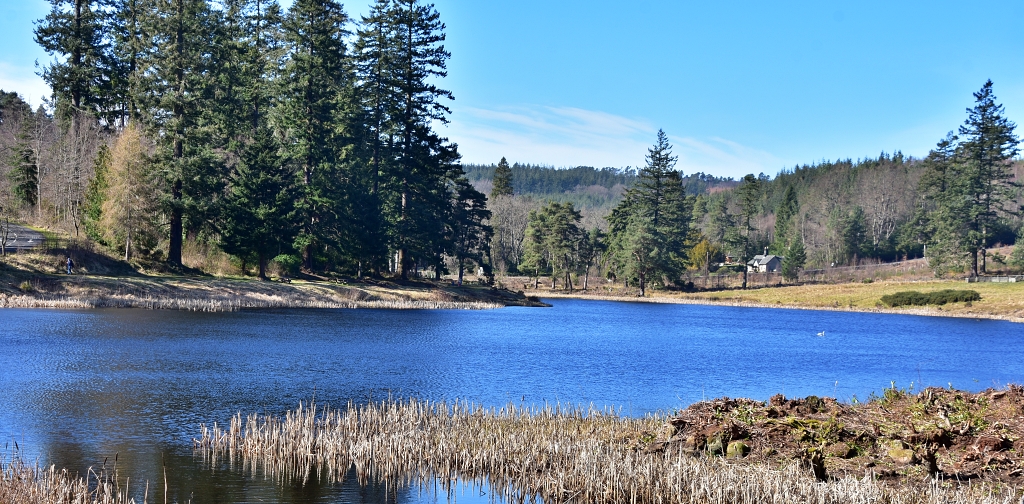 Tumbleton Lake © essentially-england.com
Tumbleton Lake © essentially-england.comWe started from the car park and went downhill to Tumbeleton Lake. Our only previous visit was many years ago on a very wet September day, so it was very pleasant to walk through the landscape in sunshine. There are lovely views across the lake, and by the dam is the new, larger Archimedes screw installed by the National Trust in 2014 which generates electrical power for Cragside. It’s nice that the National Trust have stuck to the same principle as Lord Armstrong, but just brought the technology into the 21st century!
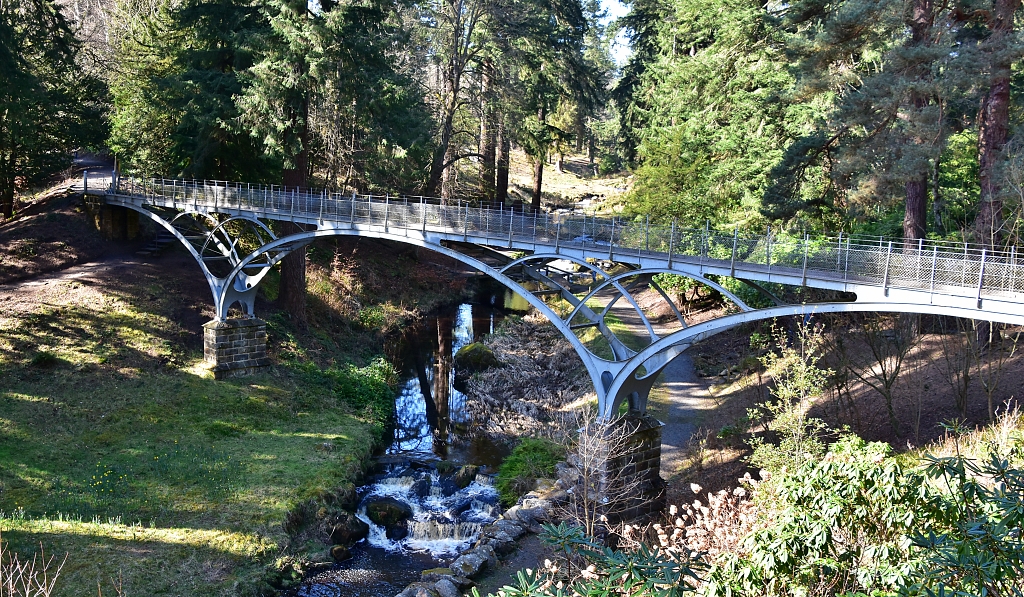 The Iron Bridge at Cragside © essentially-england.com
The Iron Bridge at Cragside © essentially-england.comFrom the dam we followed the burn through the Debdon Valley to the Iron Bridge. From the bridge, the path climbed its way through the trees to the more formal gardens. These were a bit bare at this time of year, but later in the year will be full of colour and interest.
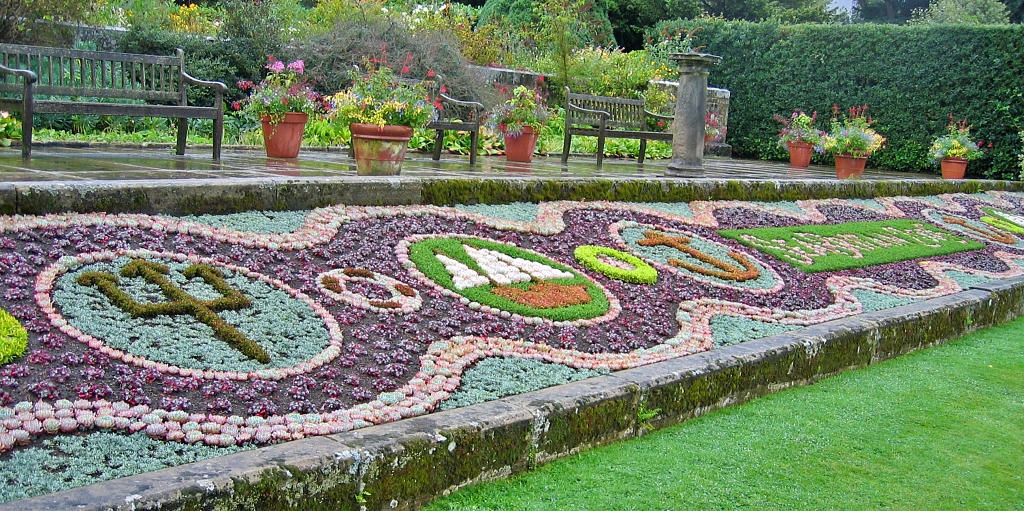 The Formal Gardens in September at Cragside
The Formal Gardens in September at Cragside © essentially-england.com
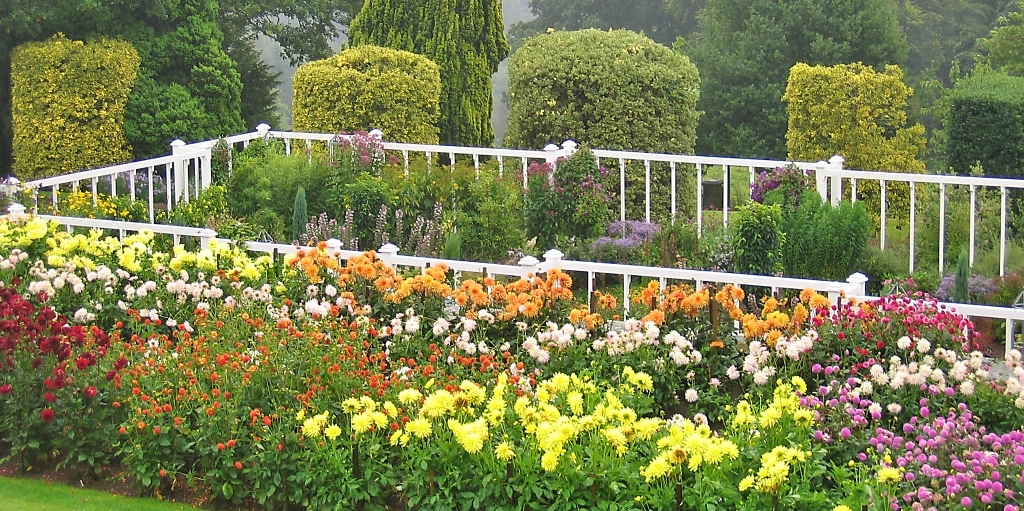 The Formal Gardens in September at Cragside
The Formal Gardens in September at Cragside © essentially-england.com
We retraced our steps back to the bridge and crossed the burn to walk through the pinetum and rockery and on up to the house.
It was nice to see the estate at a different time of year as this time the plants were just coming to life, but during our September visit the heather was all purple and some trees were turning to autumn colours!
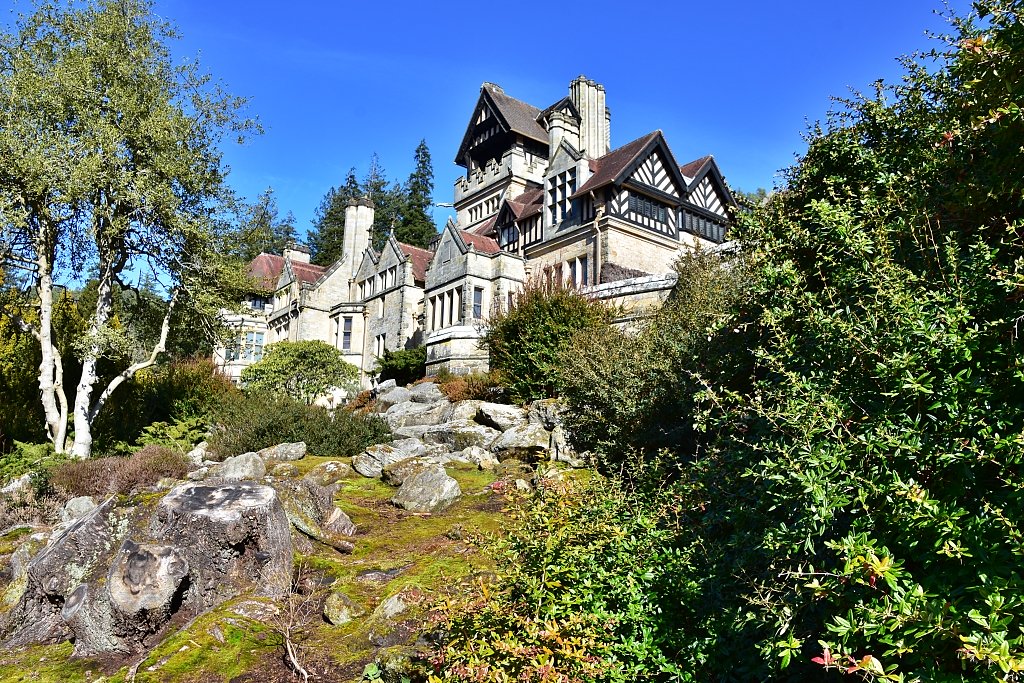 Cragside from the Rockery © essentially-england.com
Cragside from the Rockery © essentially-england.com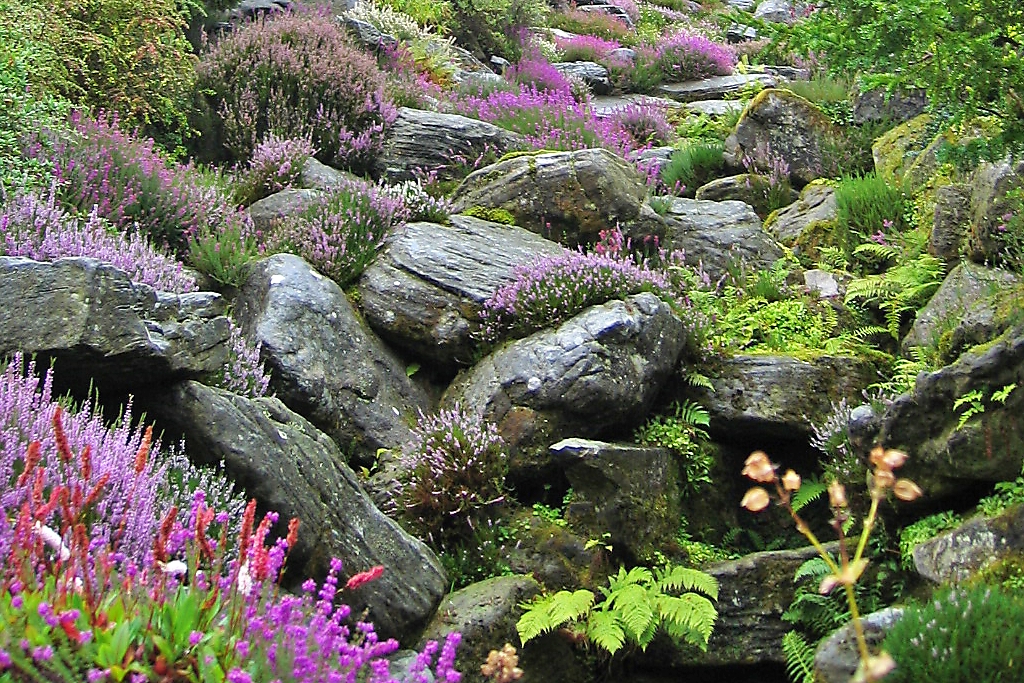 The Rockery in September © essentially-england.com
The Rockery in September © essentially-england.comCragside House Tour
Our Cragside house tour started in the bright kitchen. The kitchen was designed as a double height room to allow an extra row of windows for improved lighting and to encourage cooler temperatures. A large cooking range with roasting fire and ovens dominates the room. There are two roasting spits hanging down from a geared mechanism that is driven by a water turbine in the room below the kitchen.
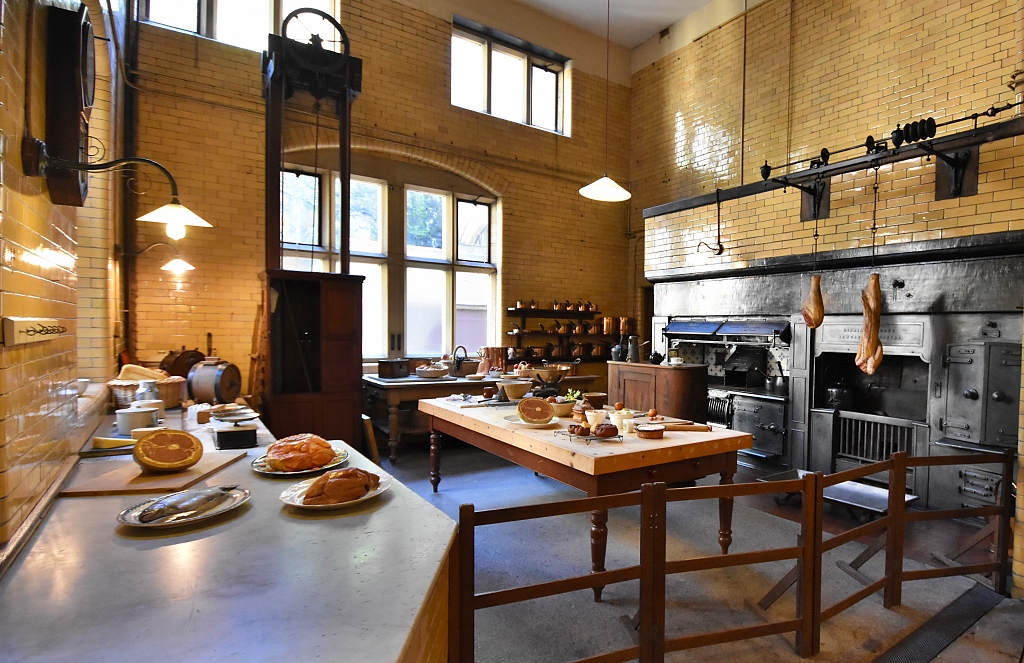 The Kitchen at Cragside © essentially-england.com
The Kitchen at Cragside © essentially-england.comThe water turbine works along the lines of a garden sprinkler system, where high pressure water is fed into an arm with two nozzles to create two jets of water to turn the connecting rod. It’s called a Barker’s Mill or Scotch turbine and was invented in the late 1600’s.
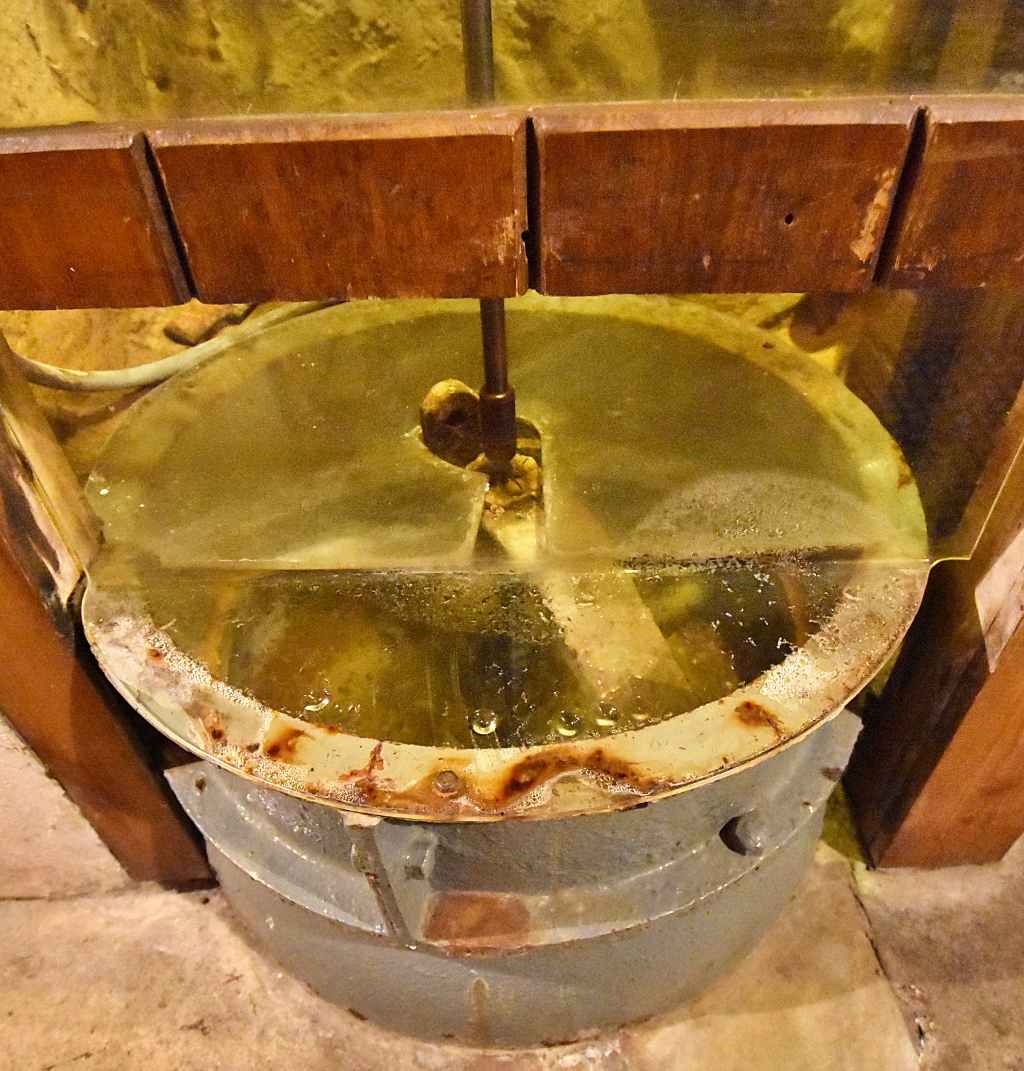 The Spit Turbine © essentially-england.com
The Spit Turbine © essentially-england.com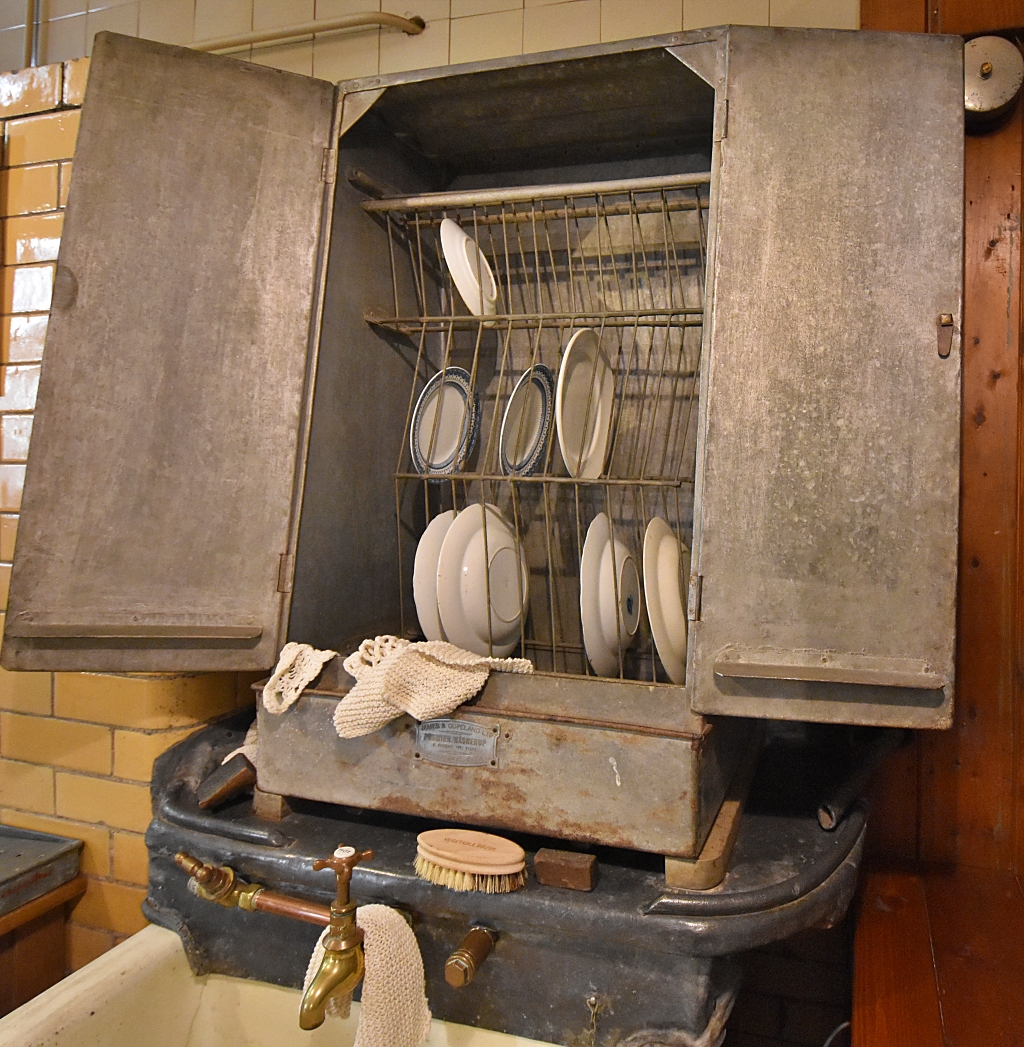 The Dishwasher © essentially-england.com
The Dishwasher © essentially-england.comAnother labour-saving item in the kitchen is the dishwasher that sits above the large sink. It’s believed that the real position for the dishwasher would have been downstairs in the scullery. Again, high pressure water would have been used and sprayed from the top of the washer to clean the plates and drain away from the bottom.
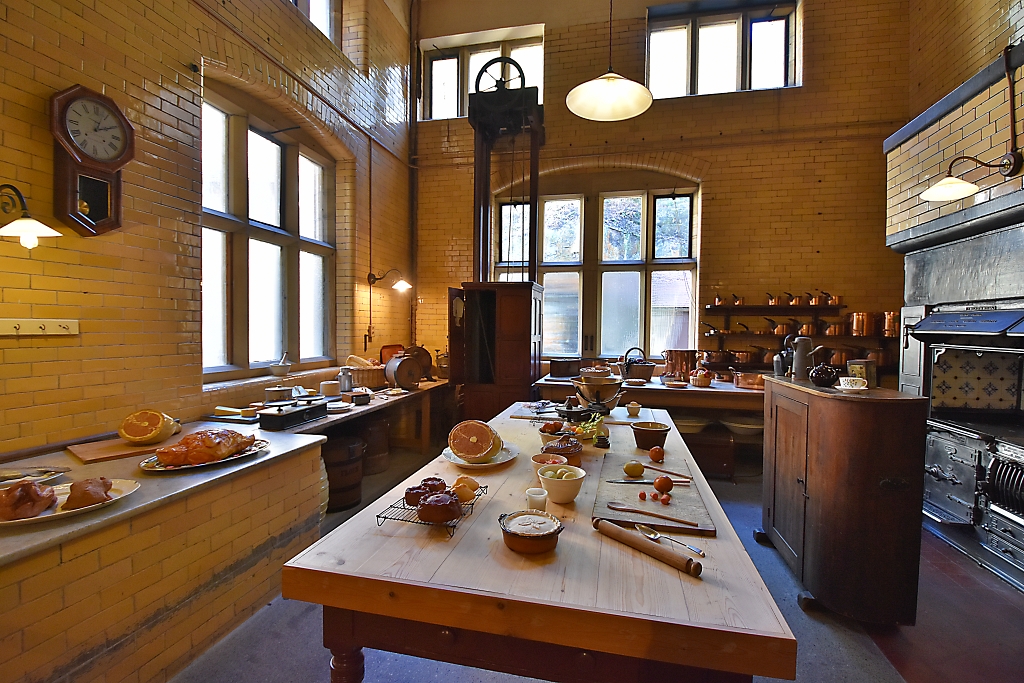 The Dumb Waiter © essentially-england.com
The Dumb Waiter © essentially-england.com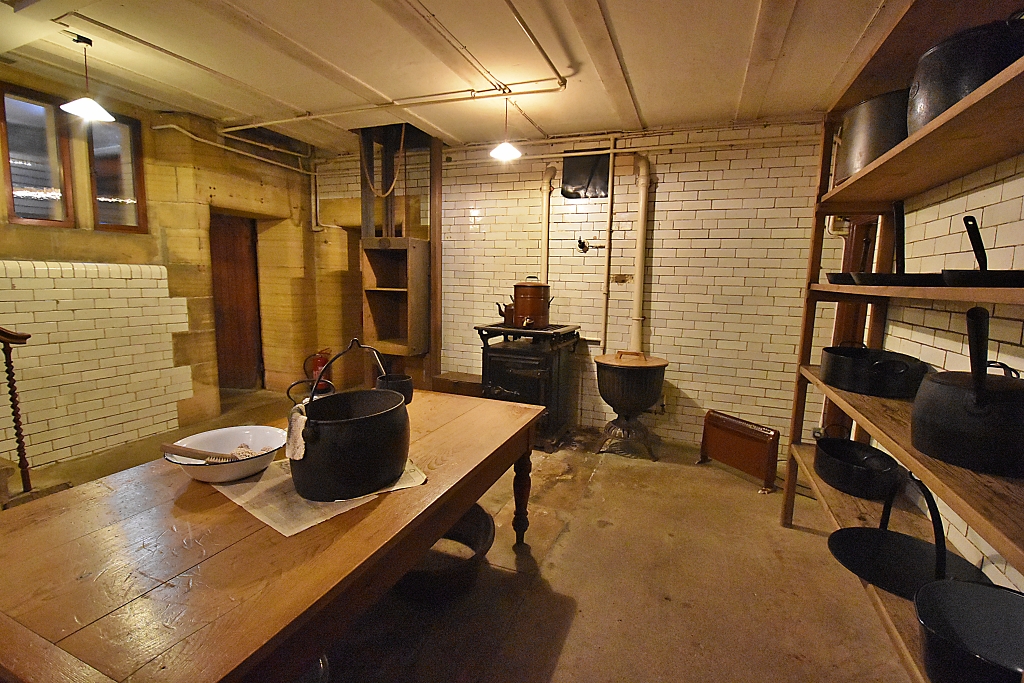 The Scullery © essentially-england.com
The Scullery © essentially-england.comIn the left-hand corner of the kitchen is the “dumb waiter”. The first patent for a dumb waiter was granted to George W Canon in 1887, although the idea was used back in the Roman era. This very early model was used to transport heavy pots, pans, plates, and food from the scullery below the kitchen.
Before leaving the kitchen, make sure to go down the stairs and visit the scullery area. In one of the rooms, you’ll see the spit turbine and hydraulic lift mechanisms.
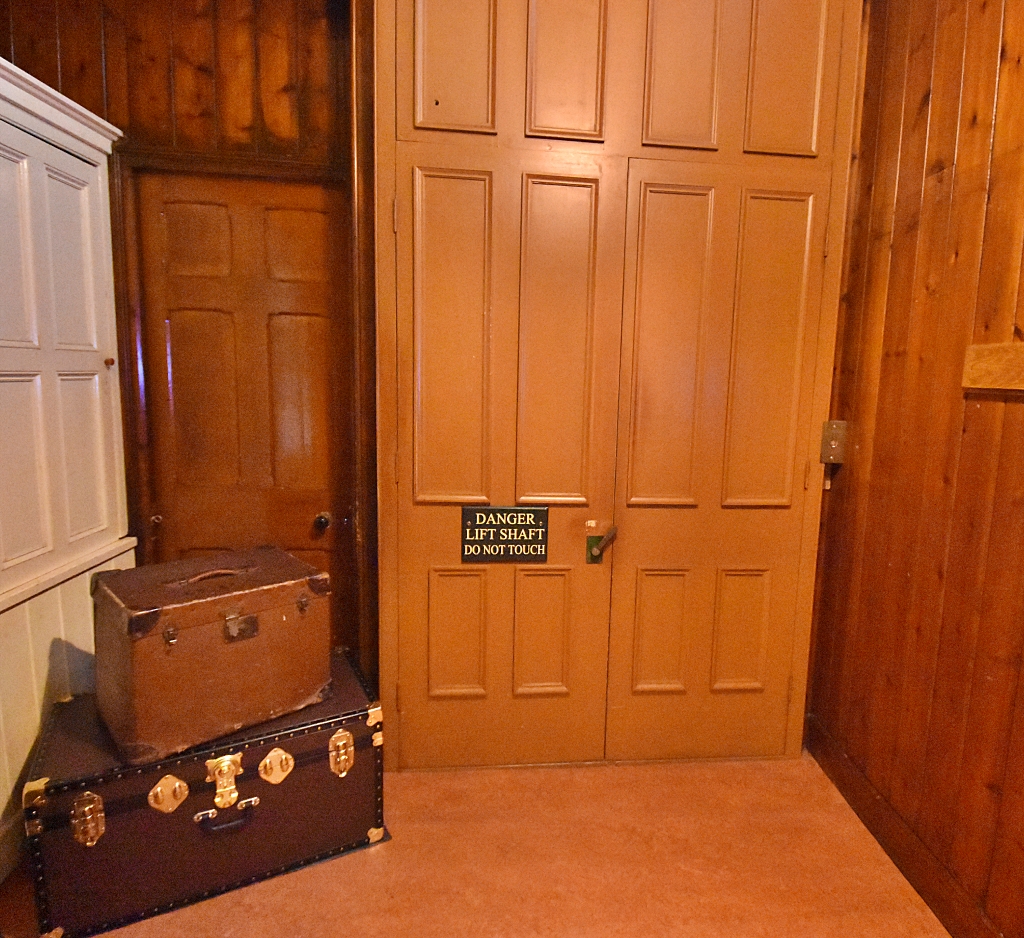 The Cragside Hydraulic Lift © essentially-england.com
The Cragside Hydraulic Lift © essentially-england.comLeaving the kitchen, our tour took us past the hydraulic lift. Created in Armstrong’s own Elswick Works in Newcastle, the lift was another useful addition to the house as it made life much easier for the servants to get up and down between floors with heavy items like scuttles of coal, bundles of washing, and warming pans. The Armstrong’s really wanted everyone to have an easier job and be more efficient!
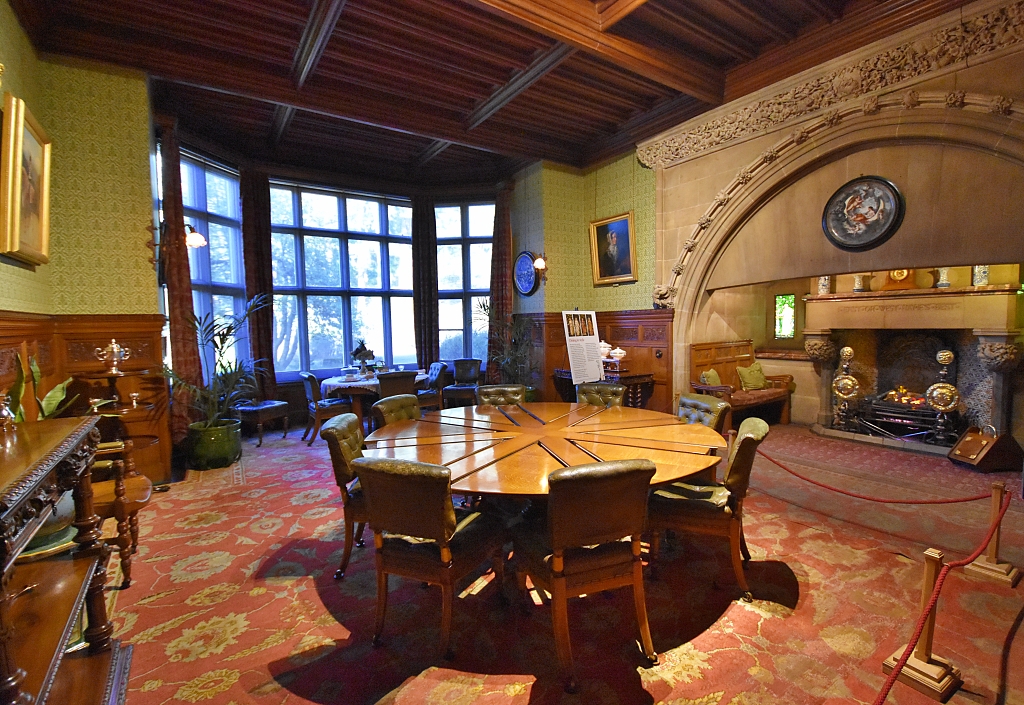 The Dining Room © essentially-england.com
The Dining Room © essentially-england.com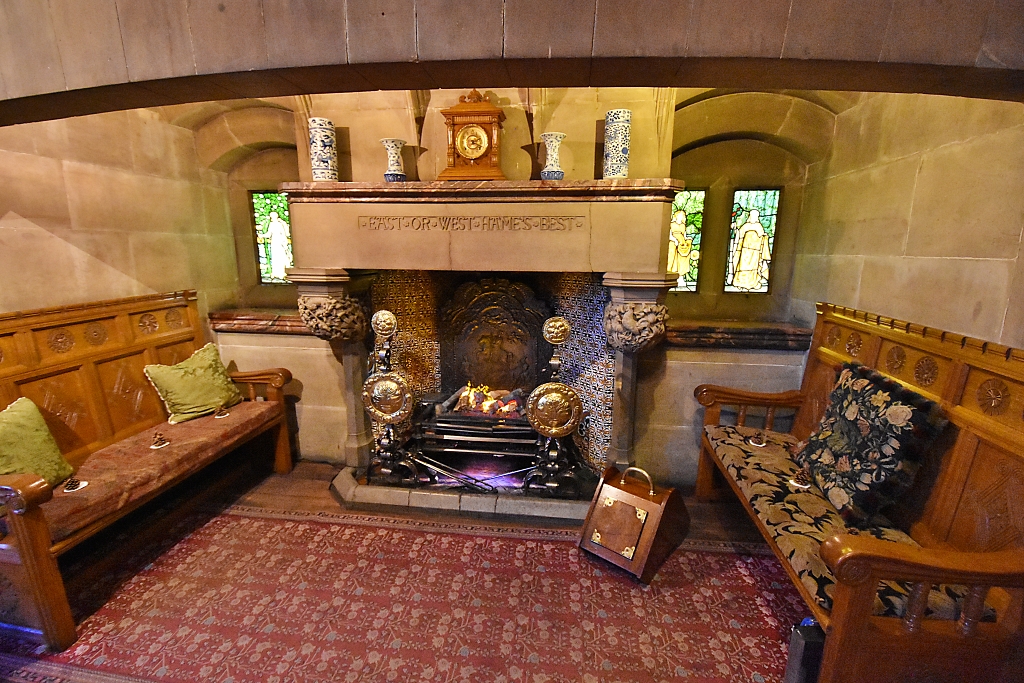 The Dining Room Fireplace © essentially-england.com
The Dining Room Fireplace © essentially-england.comThe next main room we visited was the dining room, with its dark wooden ceiling and lovely large stone inglenook fireplace. I thought the dark ceiling made the room a bit oppressive, but I loved the fireplace. Apparently, the gothic sandstone arch was modelled on the kitchen in Fountains Abbey. It must have been very cosy sitting in the inglenook on a cold winter evening reading a good book!
I also loved the four stained-glass windows at the back of the inglenook. Designed by William Morris, they're a beautiful touch!
Before leaving the dining room, take a closer look at the circular dining table. It so reminded me of the Union Jack flag. I’m not sure if that was its intention, but it did make a lovely piece of furniture.
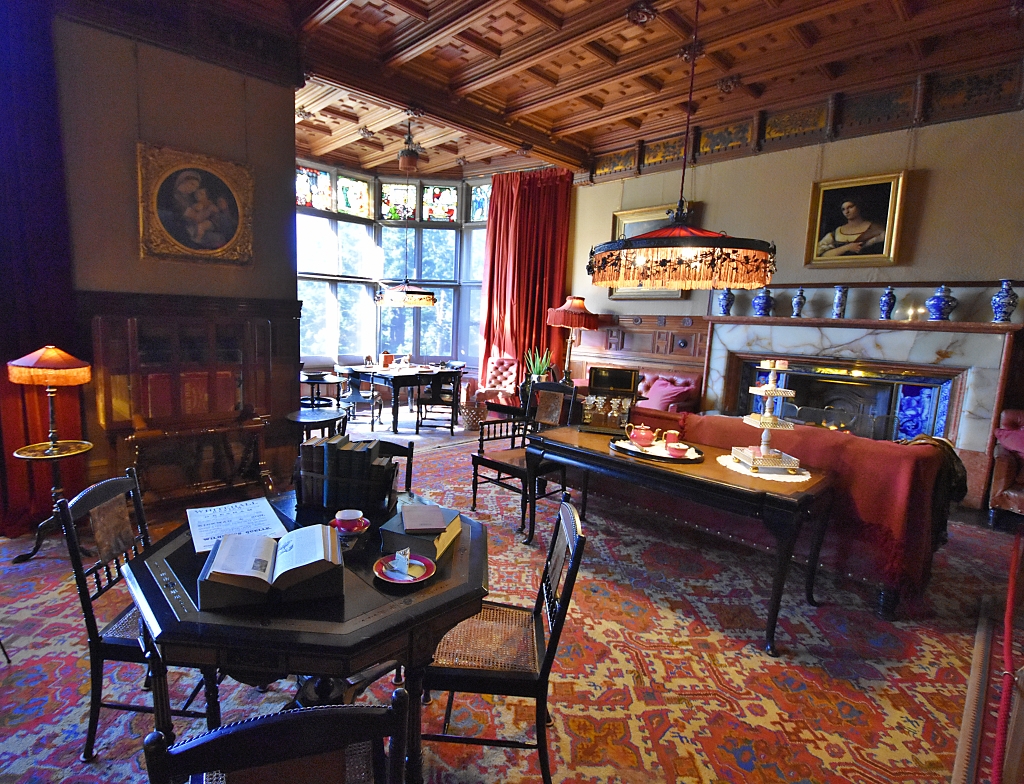 The Library © essentially-england.com
The Library © essentially-england.com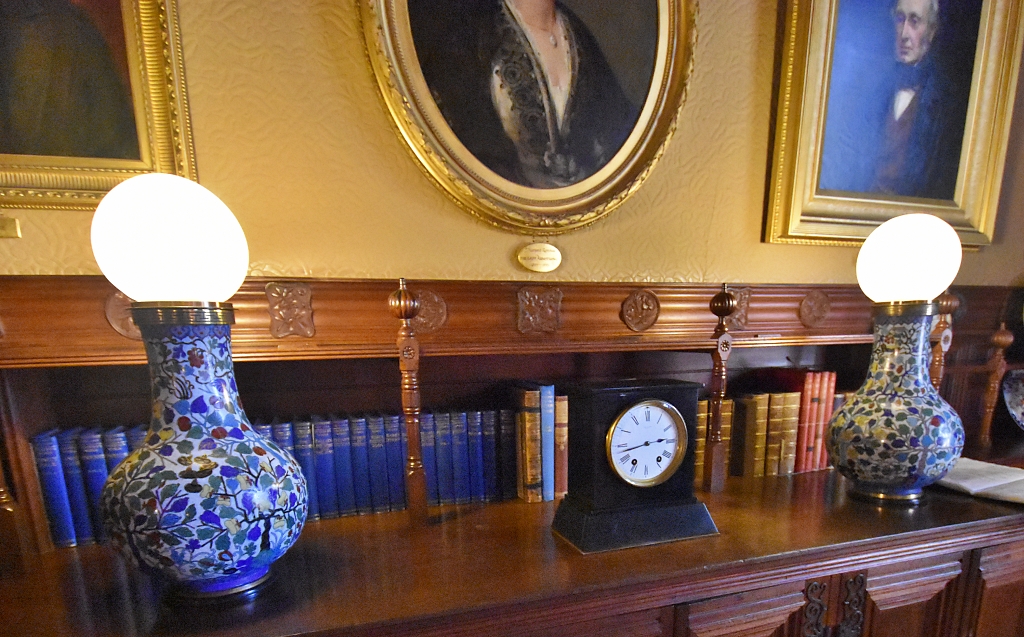 The Electrical Lamps © essentially-england.com
The Electrical Lamps © essentially-england.comThe next room is the library and like the dining room it had a carved wooden ceiling. Light did flood in through the two large windows, but it still felt rather too dark to sit and read, and this lovely room just didn’t have enough shelving for books. I got the feeling this was more of a relaxed family room rather than a library. I would have taken my book from the library and sat in the inglenook in the dining room!
On display in the library are four of the original cloisonné vases the Armstrongs had converted to electrical lamps. In 1880 these lamps used Armstrong’s friend, Joseph Swan’s, newly invented incandescent light bulbs. An incandescent light bulb is what most of us have grown up with, where a metal wire is heated up inside a sealed, airless glass bulb. When these lamps were first installed, they each stood in a bowl of poisonous mercury to complete the electrical circuit. As the electrical switch had not yet been invented, the servants controlled the lighting by lifting the vases in and out of the mercury to turn them on and off. To avoid getting electrical shocks, they had to wear thick insulating gloves!
These lamps were not the first to be used at Cragside. Arc lamps were first installed two or three years earlier. These were not as efficient or reliable as the new incandescent bulbs. And remember, it was the power of water that lit the lamps!
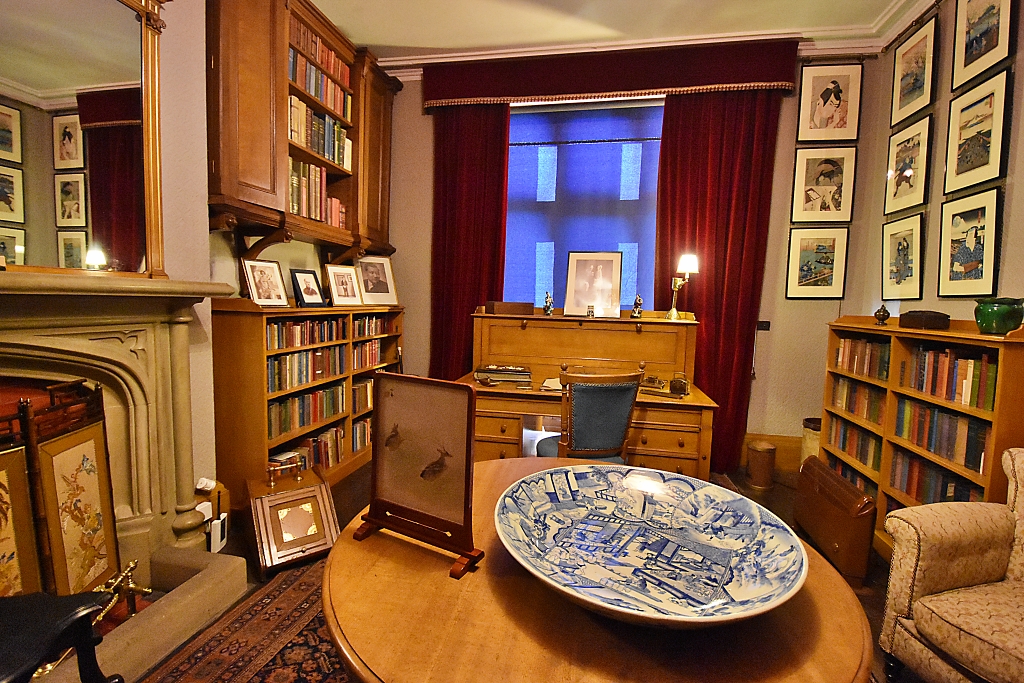 The Japanesse Room © essentially-england.com
The Japanesse Room © essentially-england.comThe Japanese Room contains gifts and presents from the Armstrong’s Japanese friends, which included the Royal Family. The lamp on the writing bureau was once powered by whale blubber.
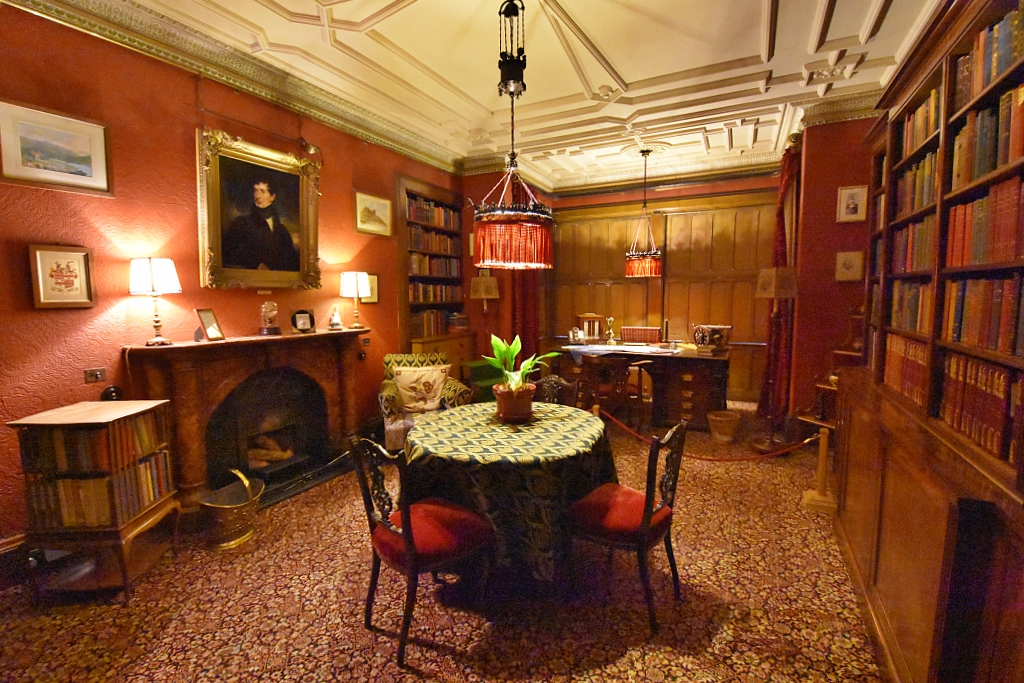 The Study at Cragside © essentially-england.com
The Study at Cragside © essentially-england.comI could just imagine Lord Armstrong closing the study door, sitting at the desk by the window and thinking. I wonder what inventions or innovations were created in the peace and quiet of this room. As he was a strong advocate of the telephone and had seven lines from Cragside to the Elswick works, perhaps some big business decisions or discussions also occurred in this beautiful study.
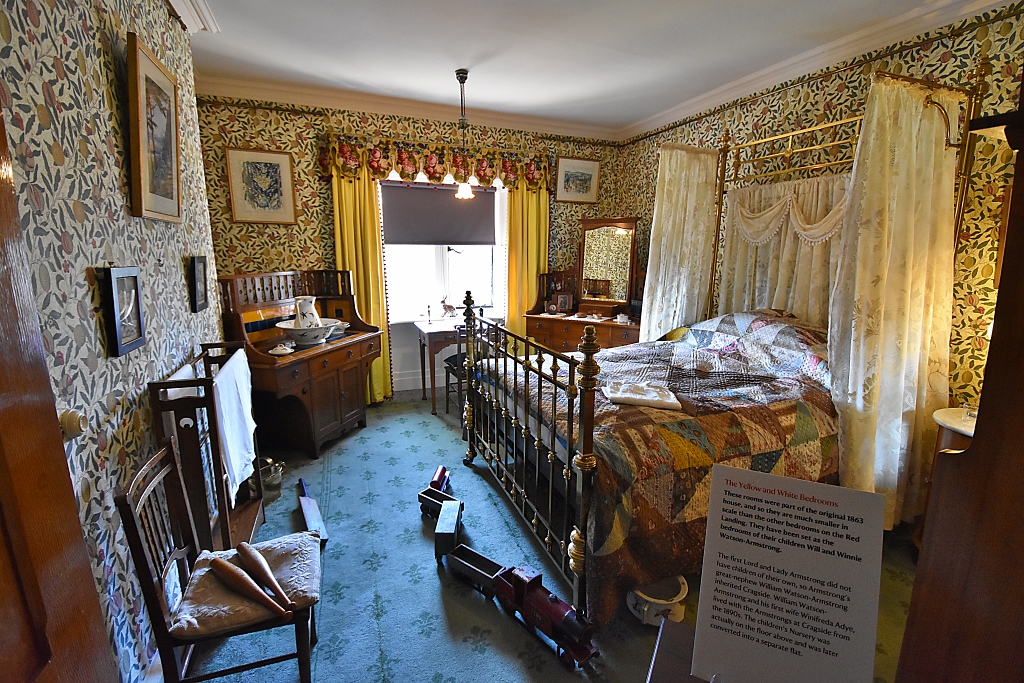 The Yellow Bedroom © essentially-england.com
The Yellow Bedroom © essentially-england.com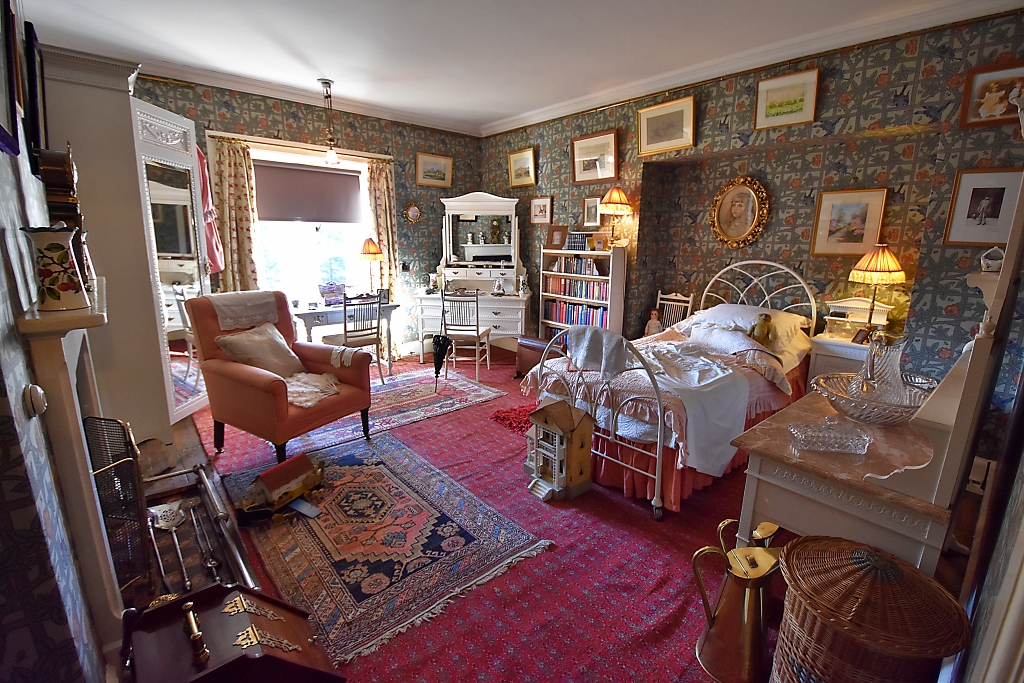 The White Bedroom © essentially-england.com
The White Bedroom © essentially-england.comThe Yellow and White bedrooms were part of the original 1863 house, and so were not as grand as the other bedrooms added in later phases. They are staged as children’s bedrooms.
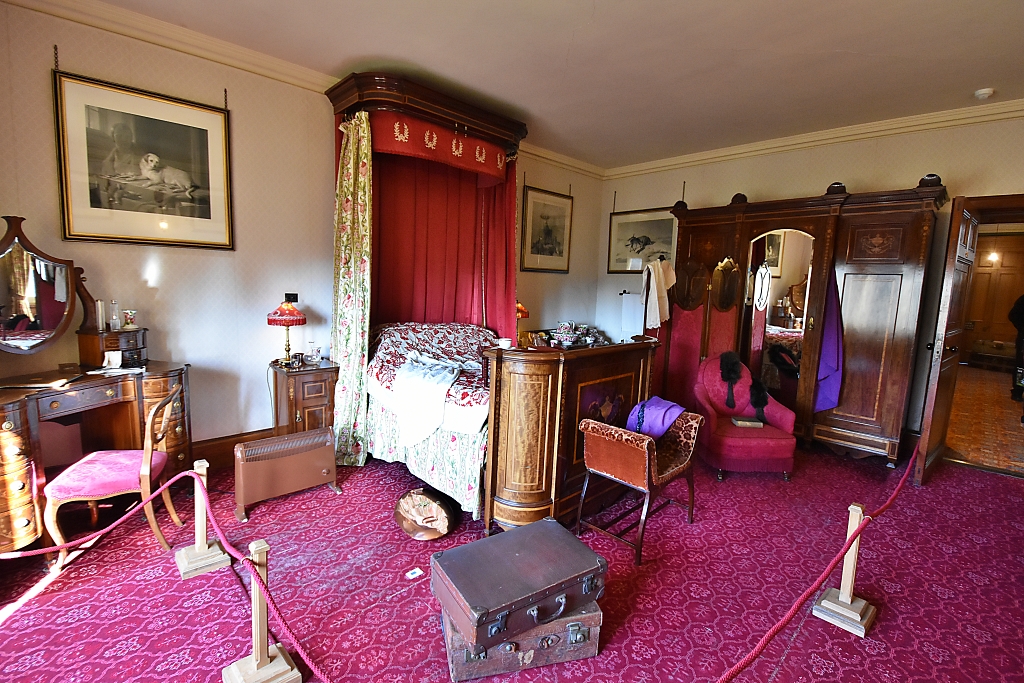 The Red Bedroom © essentially-england.com
The Red Bedroom © essentially-england.com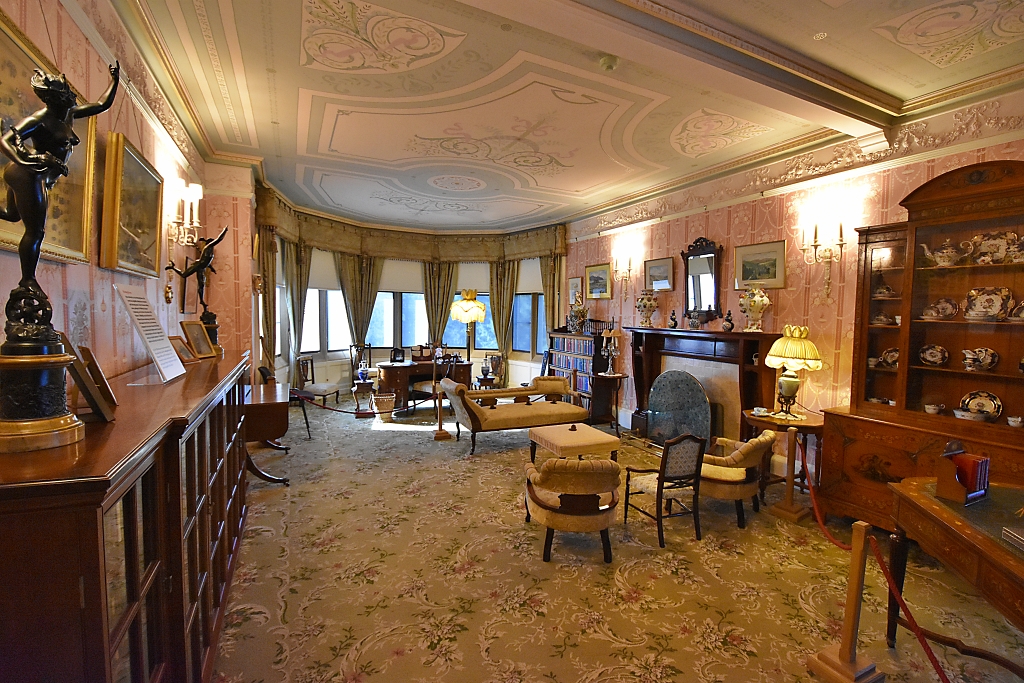 The Morning Room © essentially-england.com
The Morning Room © essentially-england.comThe red bedroom is a grander affair. This is part of the first phase of expansion of the original house of 1870-72 and includes the dining room and library below.
Strangely enough, the red bedroom wasn’t the one used by the first Lord and Lady Armstrong. Their bedroom suite was opposite the yellow and white bedrooms in the original part of the house and is not open to the public.
Next to the red bedroom is the beautiful morning room with its decorated ceiling and wide bay window overlooking the rock garden and pinetum.
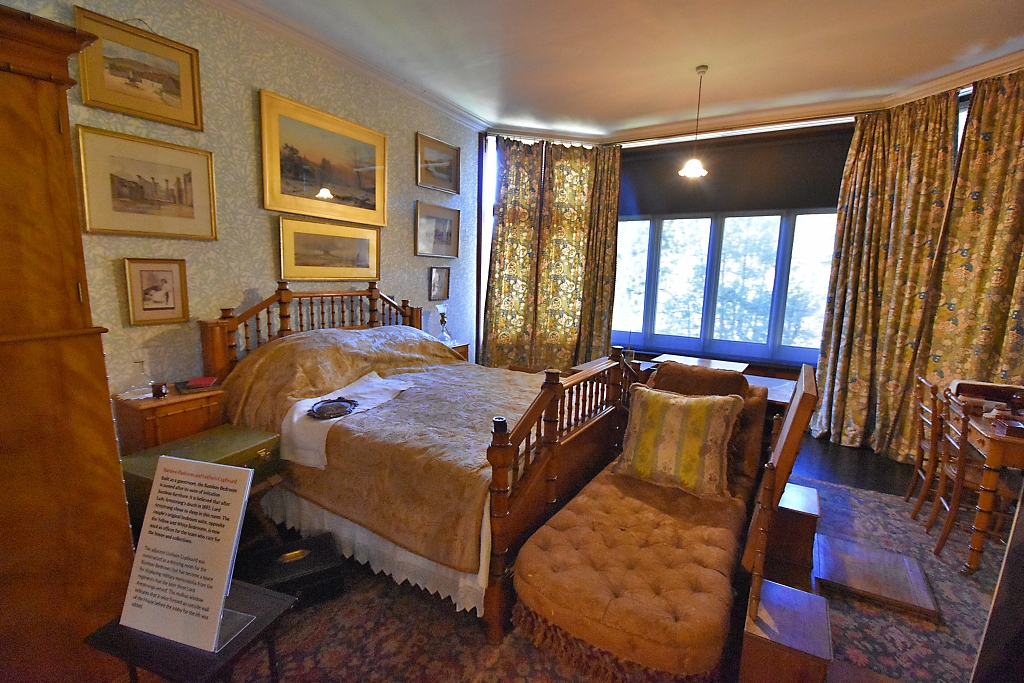 The Bamboo Room © essentially-england.com
The Bamboo Room © essentially-england.com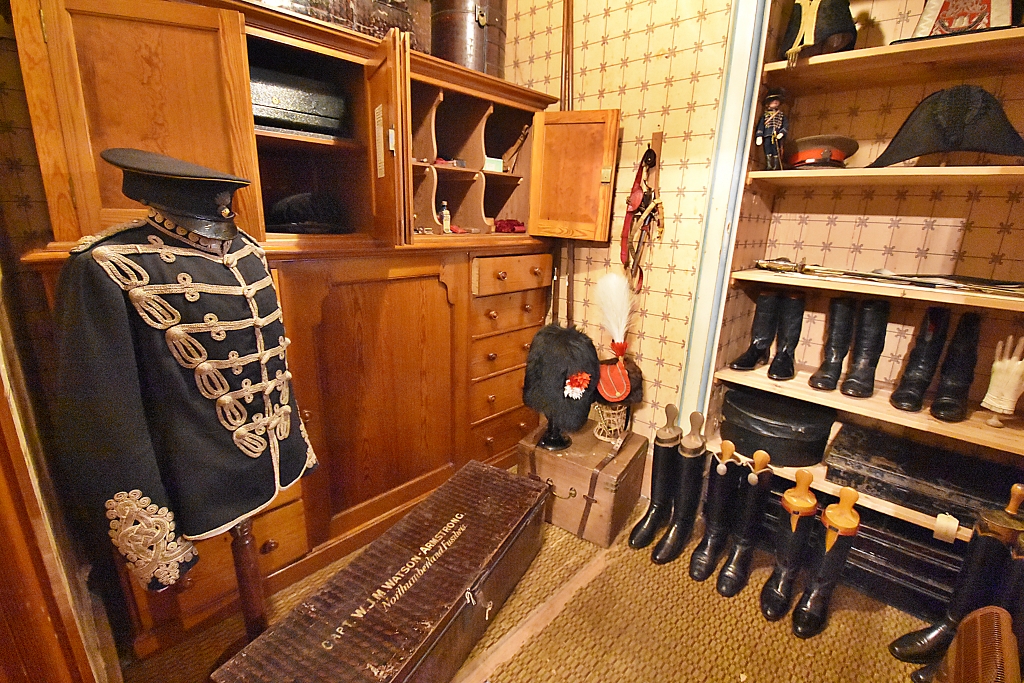 The Military Room © essentially-england.com
The Military Room © essentially-england.comThe Bamboo Room was a guest room and gets its name from the fake bamboo bedroom furniture. Apparently, after Lady Armstrong’s death in 1893, Lord Armstrong preferred to sleep in this room.
The dressing room attached to the Bamboo Room is now used to display military memorabilia from the regiments the later Lord Armstrongs served.
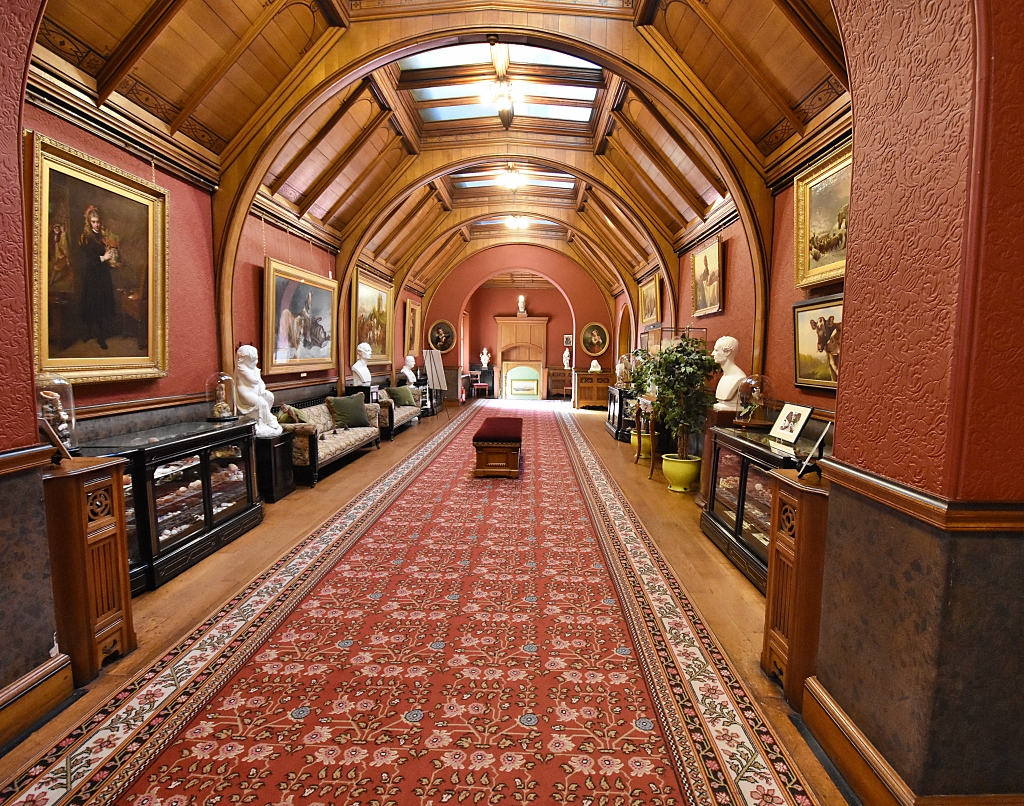 The Gallery © essentially-england.com
The Gallery © essentially-england.comThe second phase of extension occurred between 1872 and 1877. During this period the entrance hall, Owl Suite, gallery, and Gilnockie Tower were built.
The gallery is a wonderful, arched room that crosses between the main house and Gilnockie Tower. The wood panelled roof is full of glass windows that make this a lovely place to view paintings and collections. Just off the main gallery is a smaller gallery displaying water colour paintings.
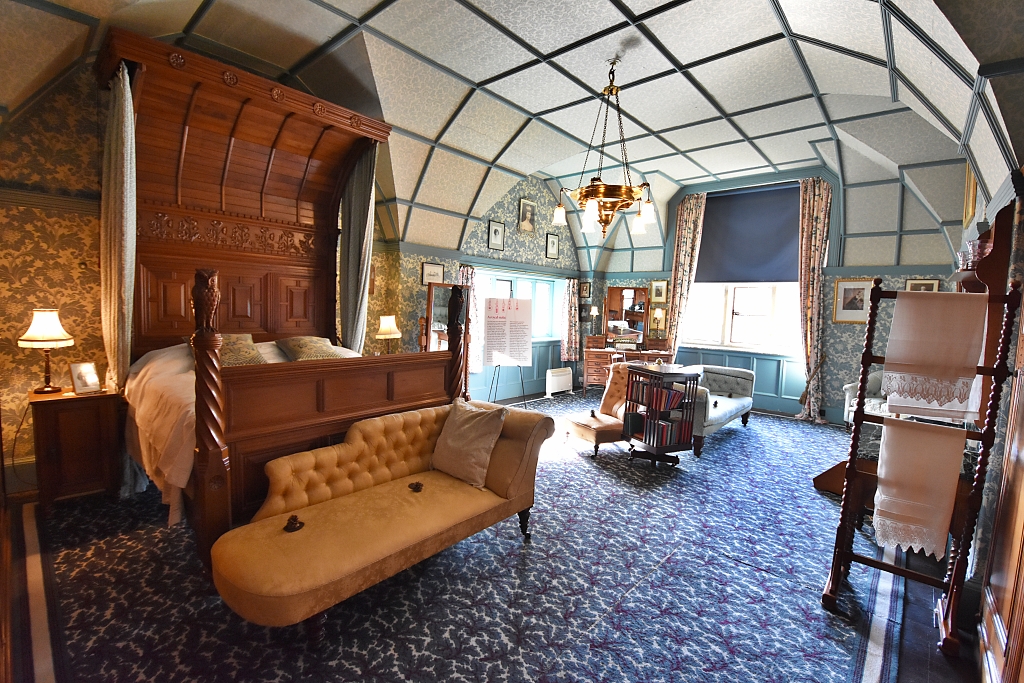 The Owl Suite © essentially-england.com
The Owl Suite © essentially-england.comA third phase of extension included the refurbishment of the Owl Suite and the construction of the drawing room. This was completed just in time for the visit of the Prince and Princess of Wales and their five children on the 19th of August 1884. It was extremely rare that the Royal family would stay at the house of a commoner, but the draw of all the magical innovations around Cragside had to be experienced, even by a future King of England!
The Owl Suite gets its name from the owls carved into the American walnut bed frames. All the rooms in the suite were given hot and cold running water, central heating, electric lighting, and servant call buttons. The rooms included fitted wardrobes, which at the time was a new fashion innovation.
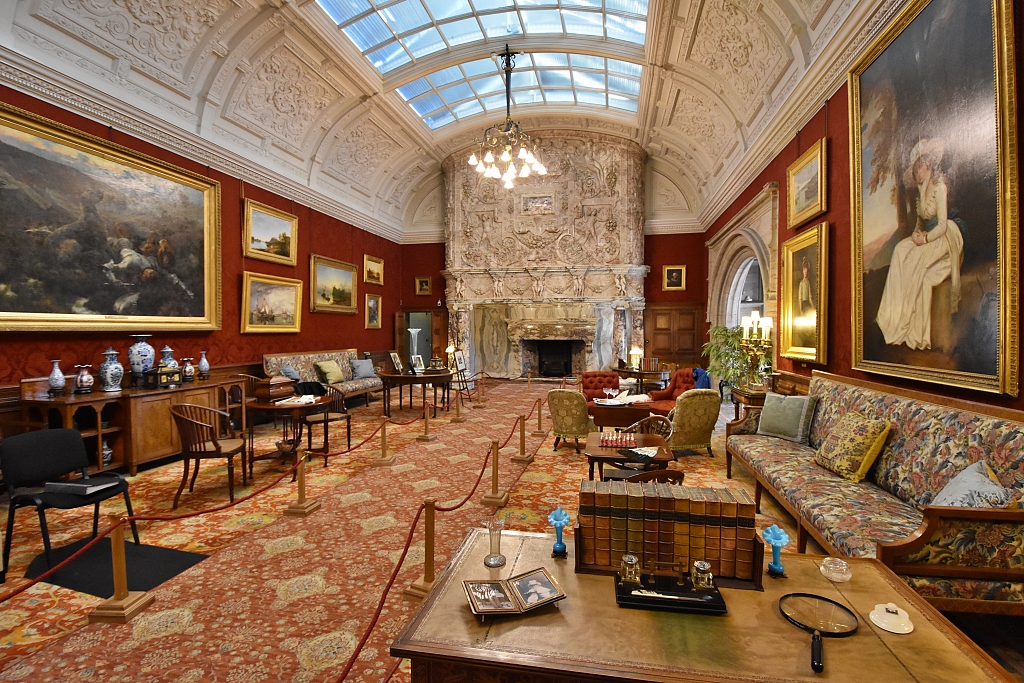 The Drawing Room © essentially-england.com
The Drawing Room © essentially-england.comThe drawing room is reached by passing along the gallery. This 60-feet long and 25-feet wide room is a showstopper. The curved ceiling is full of windows allowing light to stream into the room. At one end is a two-storey marble inglenook fireplace. The giant fireplace was so heavy that designer Norman Shaw had to build it into the rocks of the hillside to support its weight. This room is certainly fit for a King!
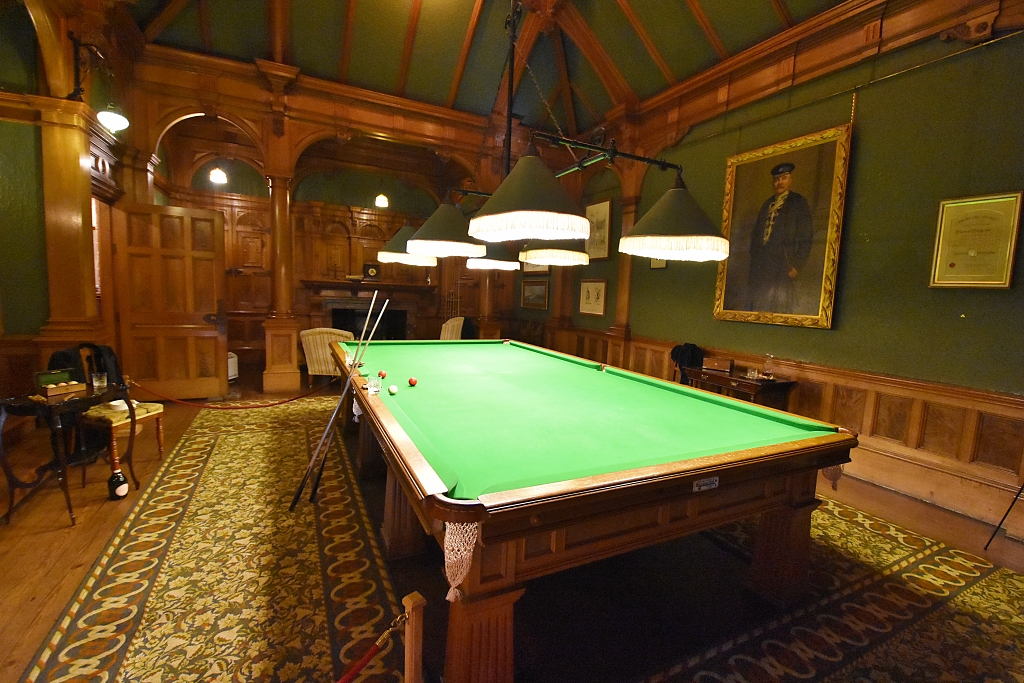 The Billiards Room © essentially-england.com
The Billiards Room © essentially-england.comThe last major additions were made in 1895 by new architect Frederick Waller. The new extension included a billiard room and electrical room. Lord Armstrong used the electrical room as his laboratory in the last years of his life.
There is so much to see and do around Cragside house and estate that it will be a real day out. Even now, after our second visit, I’m still finding out about things that I didn’t spot during our tour.
One thing I didn’t see was the electrical dinner gong. I’m not sure if this would be fully automatic like an alarm clock or whether you pushed a button and it gonged for dinner. If it was the latter, then it seems a bit extravagant, and I couldn’t really see it being a time or labour-saving device!
It looks like another visit is required…
Are You Planning to Visit Northumberland?
Where You Could Stay
There's a reason Northumberland is one of my favourite English counties. Its landscape is utterly gorgeous with long beaches and empty sweeps of hills that just beg to be walked. In between you can find small towns and pretty villages, conntected by lanes that are great on the bike as long as you have the legs for climbing. And there are holiday cottages to suit all tastes and budgets.
To see other holiday cottages in Northumberland click here. Or check out holiday cottages in other parts of England by clicking here.
Or you could try a family orientated Parkdean Resort in Northumberland.
If you need to find a hotel, then try one of these search platforms...
What You Could See and Do
Even if you stayed a month, you'd find that you don't have enough time to explore the county top to bottom and see everything it has to offer. There's plenty of history from Hadrian's Wall to Lindisfarne in the north with reams of castles and ruins in between. There are beaches and seaside towns like Craster, Alnmouth and Seahouses - and some of the best fish & chips in all of England. There are market towns like Haltwhistle, Rothbury, Bellingham, Berwick, Warkworth and Harbottle to explore. And there are hillsides to climb and the great outdoors to enjoy.
Are you feeling in need of a holiday yet? Here are a few more pages that might give you ideas...
- Berwick-upon-Tweed
- Alnwick Castle
- The Holy Island of Lindisfarne
- Warkworth Castle
- Dunstanburgh Castle
- Cycling in Northumberland - my favourite tandem tour EVER!
- Visit the beach at Alnmouth.
- Stroll around Alnwick town.
And if you want to explore more of Northumberland and its martial history, check out this Northumberland Castle Tour.
For more holiday ideas return to the Northumberland page.

